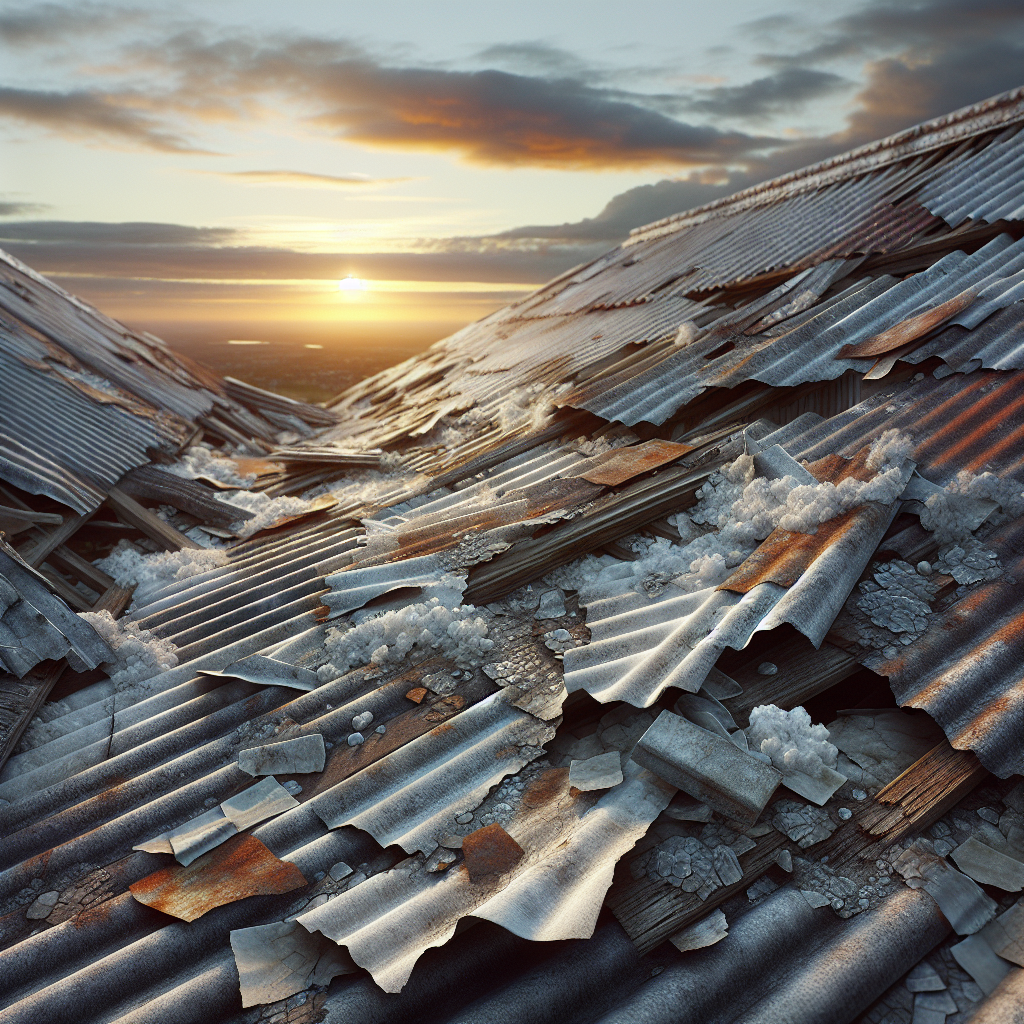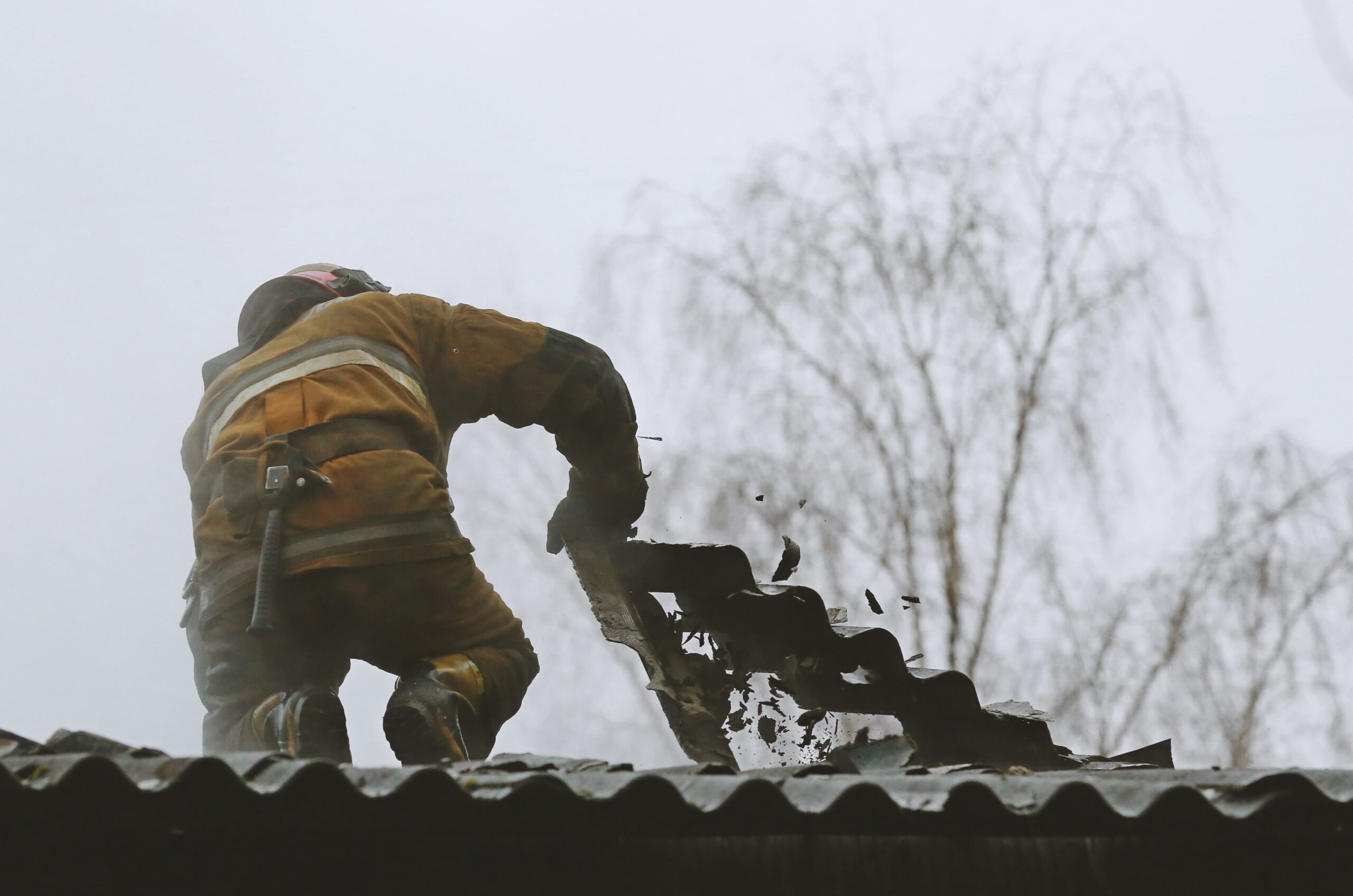
Many older homes, often cherished for their character and craftsmanship, may conceal a serious risk in their roofing materials: asbestos roofing. Although banned in many countries decades ago, asbestos-containing roofing products remain in place on countless properties. The danger lies not in the roofs’ intact condition, but in the potential disturbance or degradation of these materials that can release harmful fibers. Understanding why asbestos roofing persists and its implications is critical for homeowners, renovators, and property managers wishing to protect health and property value.
Asbestos roofing was popular from the early 20th century to the late 1980s, prized for its durability, fire resistance, and insulating properties.
– Asbestos cement sheets: Composed of cement and asbestos fibers, used in corrugated or flat sheets.
– Roofing felts and shingles: Felt materials impregnated with asbestos fibers for waterproofing and fire resistance.
– Cladding panels: Often used for exterior walls but sometimes applied to roofing elements.
– Longevity and low maintenance needs
– Heat and fire resistance
– Cost-effective compared to alternatives available at the time
Though effective, these benefits came at a health cost unrecognised during the period of widespread use.
One key reason asbestos roofing risks endure is the sheer volume of existing older homes that were built or renovated before regulations changed.
– Asbestos roofing can last 50 years or more if undisturbed. This means many homes built mid-20th century or earlier still retain original asbestos materials.
– Owners often remain unaware of the presence of asbestos roofing unless specifically tested.
– Renovations or weather damage can disturb roofing panels and release asbestos fibers.
– In some regions, regulations allow asbestos roofing to remain in place if intact, creating a false sense of security.
– Intact asbestos roofing poses little immediate threat, but degradation or accidental disturbance turns it hazardous.
– DIY repairs, storm damage, or roof replacements without proper safety measures are common triggers for asbestos exposure.
– Older homes may also have other asbestos-containing materials, compounding the risk.
Asbestos is a known carcinogen linked to serious respiratory diseases.
– Asbestosis: Scarring of lung tissue causing breathing difficulties.
– Mesothelioma: An aggressive cancer affecting the lining of lungs, abdomen, or heart, almost exclusively caused by asbestos exposure.
– Lung cancer and other respiratory diseases.
Asbestos fibers are dangerous when airborne and inhaled. The brittle nature of asbestos roofing materials can lead to fiber release during breakage or abrasion. Fibers can remain suspended and inhaled, lodging deep into lung tissue.
Proper identification and management strategies are essential for safeguarding health and compliance with regulations.
– Professional asbestos survey: Certified inspectors use sampling and lab analysis to confirm asbestos presence.
– Visual clues: Older cement sheets, corrugated panels with a fibrous texture, and dated roofing styles may indicate asbestos.
– Historical records or building permits might give insight into roofing materials used.
– Leave intact asbestos roofing undisturbed when possible.
– Avoid drilling, sanding, cutting, or breaking panels.
– Engage licensed asbestos removal professionals for any renovations or replacements involving asbestos roofing.
– Use appropriate personal protective equipment (PPE) to minimize exposure risks during inspections or work.
Removing asbestos roofing is a regulated process to ensure safety and environmental protection.
1. Hire licensed asbestos professionals with experience in roofing removal.
2. Obtain necessary permits or notifications to local authorities.
3. Follow strict containment practices to prevent fiber release.
4. Use appropriate PPE and decontamination procedures.
5. Dispose of materials at approved hazardous waste facilities.
– Opt for modern, non-asbestos materials such as metal, slate, or synthetic composites.
– Consider energy-efficient or insulating options that meet current building standards.
– Check warranties and certifications to ensure durability and safety.
Early detection and management prevent costly damages and health risks.
– Schedule professional roofing inspections every few years or after severe weather.
– Look for signs of damage like cracks, crumbling edges, or moss growth indicating possible asbestos degradation.
– Address leaks or structural issues promptly to avoid disturbing asbestos panels.
– Keep records of inspections and any asbestos-related works for future reference.
– Minimizes risk of accidental exposure and contamination.
– Helps plan budget and timelines for safe removal or refurbishment.
– Preserves property value by ensuring compliance with health and safety standards.
Many countries have stringent rules governing asbestos management.
– Mandatory asbestos surveys may be required before property sales or renovations.
– Strict removal and disposal protocols protect public and environmental health.
– Fines and legal liabilities apply for improper handling.
– Health and safety government websites provide guidelines.
– Professional associations for asbestos removal offer directories of certified contractors.
– [Health and Safety Executive (HSE)](https://www.hse.gov.uk/asbestos/) offers comprehensive advice on asbestos management.
Asbestos roofing remains a hidden danger in many older homes, but with knowledge, vigilance, and professional support, homeowners can manage risks effectively. Awareness of asbestos roofing materials, proactive inspections, and adherence to legal and safety standards ensure homes remain safe and preserve their value for future generations.
For questions about asbestos roofing inspection, removal, or replacement, do not hesitate to reach out for expert guidance. Protect your family and property by taking the necessary steps today—contact info@garageroofcompany.co.uk for professional advice and services tailored to your roofing needs.








Select the service that best matches your needs
Get your free no-obligation quote today